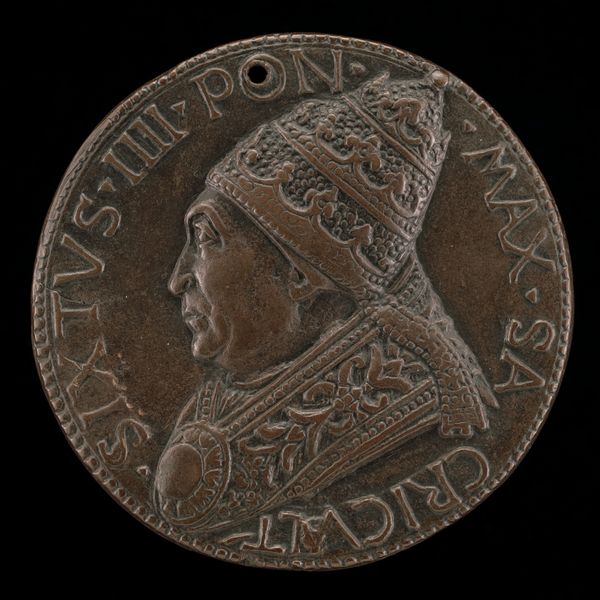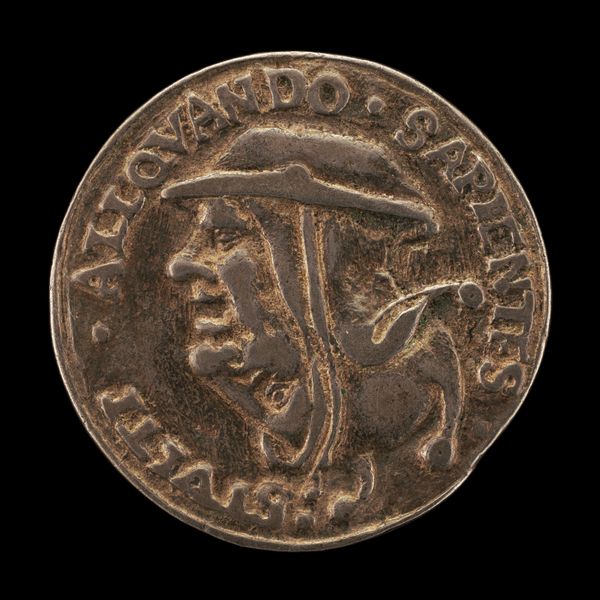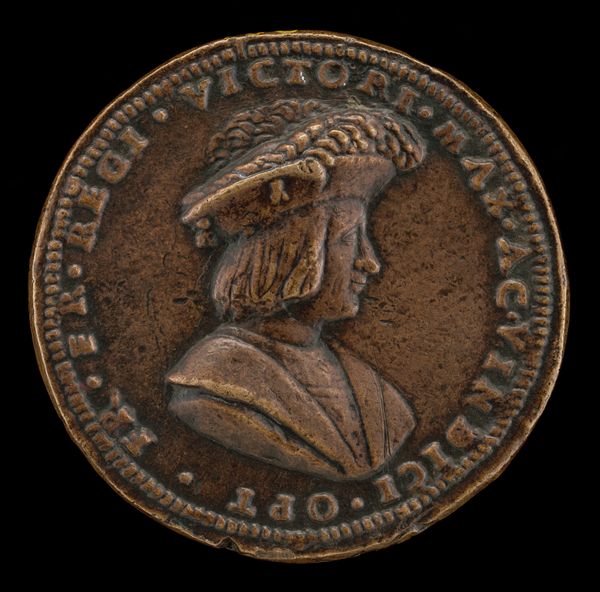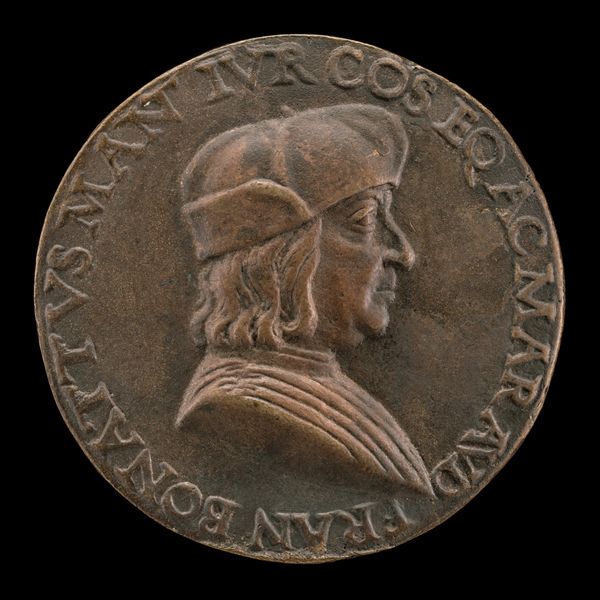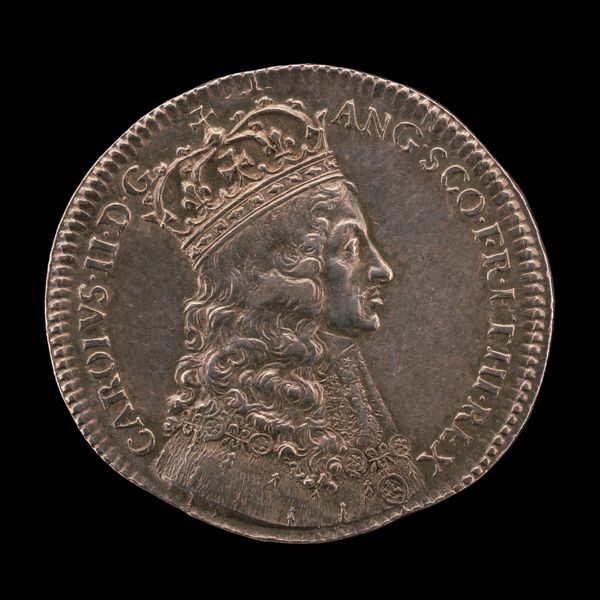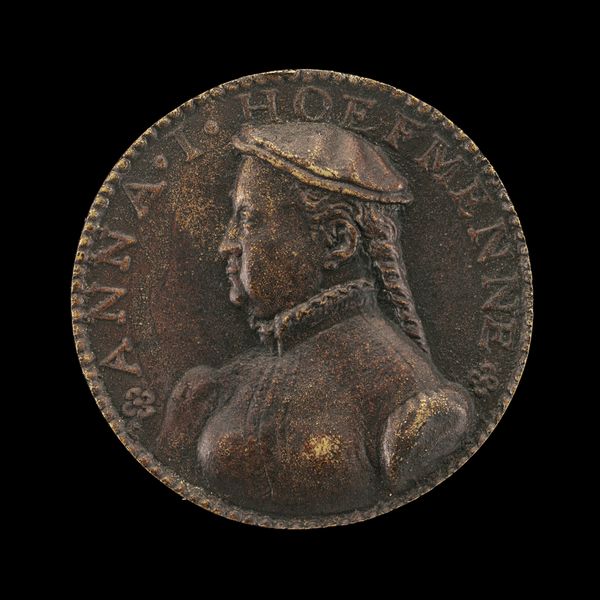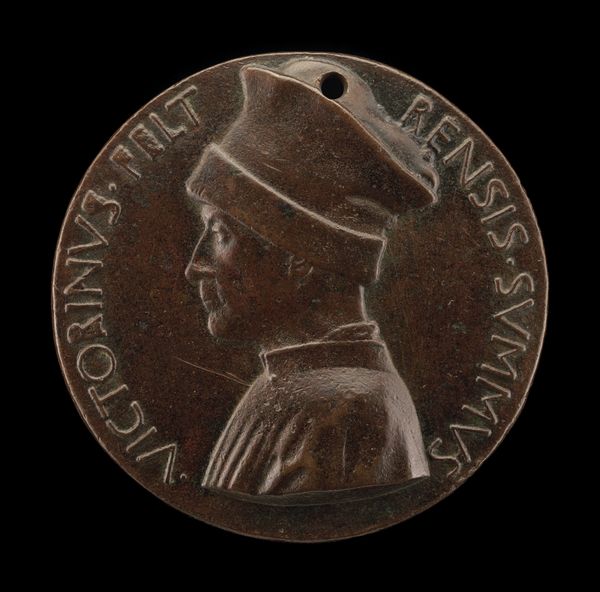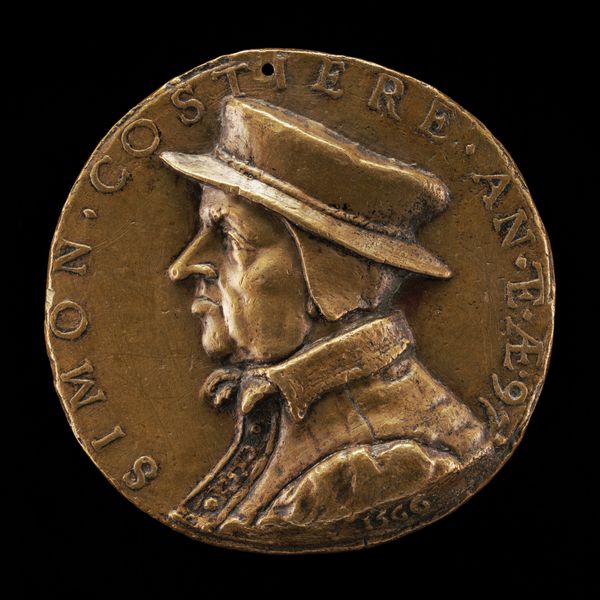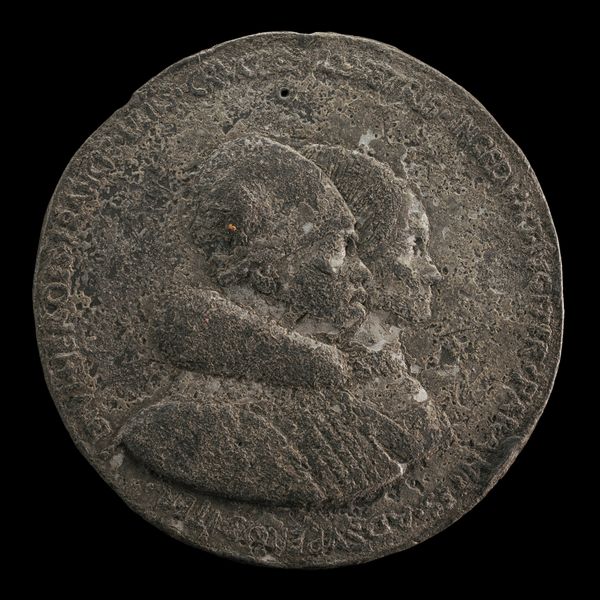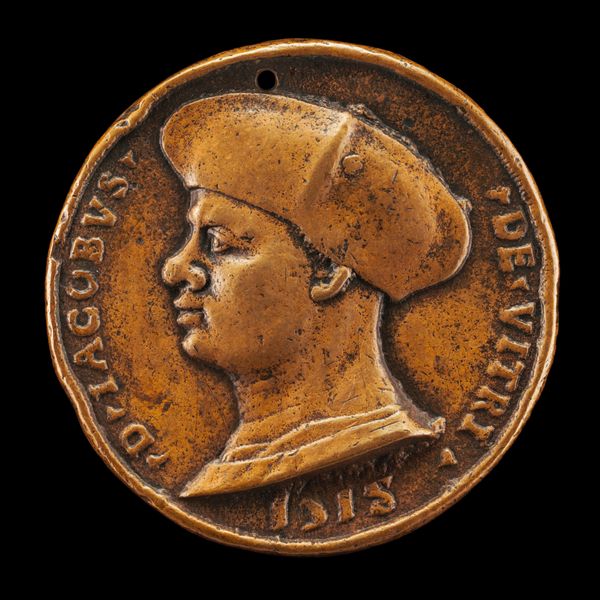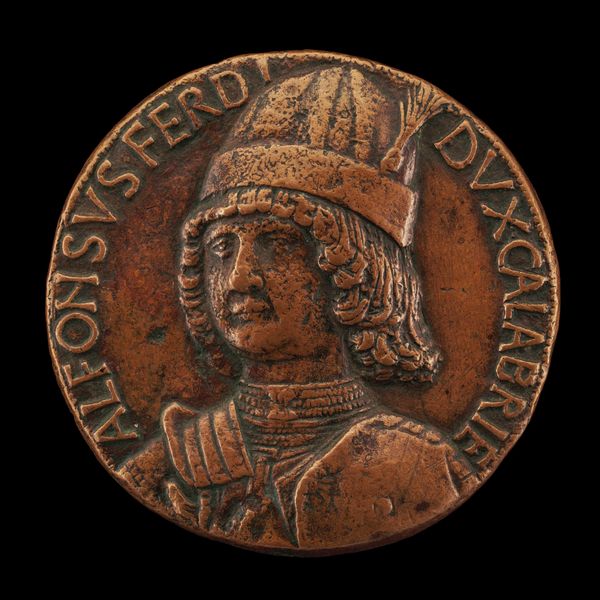![Callistus III (Alfonso de Borja, 1378-1458), Pope 1455 [obverse] by Andrea Guacialoti](/_next/image?url=https%3A%2F%2Fd2w8kbdekdi1gv.cloudfront.net%2FeyJidWNrZXQiOiAiYXJ0ZXJhLWltYWdlcy1idWNrZXQiLCAia2V5IjogImFydHdvcmtzL2YxZTFjMTUxLTI4MTAtNDM0Ny04ODFkLWFlMjlkZjI5ZWFkYi9mMWUxYzE1MS0yODEwLTQzNDctODgxZC1hZTI5ZGYyOWVhZGJfZnVsbC5qcGciLCAiZWRpdHMiOiB7InJlc2l6ZSI6IHsid2lkdGgiOiAxOTIwLCAiaGVpZ2h0IjogMTkyMCwgImZpdCI6ICJpbnNpZGUifX19&w=3840&q=75)
Callistus III (Alfonso de Borja, 1378-1458), Pope 1455 [obverse] 1455 - 1458
0:00
0:00
sculpture
#
medal
#
3d sculpting
#
stone
#
sculpture
#
detailed texture
#
sculptural image
#
unrealistic statue
#
carved into stone
#
sculpting
#
sculpture
#
carved
#
statue
Dimensions: overall (diameter): 4.29 cm (1 11/16 in.) gross weight: 42.25 gr (0.093 lb.) axis: 6:00
Copyright: National Gallery of Art: CC0 1.0
Curator: This striking piece is a medal depicting Callistus III, also known as Alfonso de Borja, who reigned as Pope from 1455 to 1458. Andrea Guacialoti created it. Editor: The weight of authority, quite literally. It gives the impression of solidity and power, a kind of permanence crafted from what appears to be bronze. It’s a very tactile image. I wonder how it was made. Curator: Medals such as this were often commissioned to commemorate a significant figure or event. In this case, it functions to cement the image and power of Callistus III for posterity. The imagery—the papal tiara, the severe profile—it all speaks to unwavering authority. Editor: Indeed. Bronze casting involves complex processes, and in 15th-century Italy, the artist’s labor and workshop organization would have been intensive. We need to think of the economic and social contexts embedded in this portable, reproducible object. The inscriptions create a social context—who was this meant for and seen by? Curator: Certainly, the inscription 'Callistus Tertius Papa' serves as both identifier and proclamation. Looking closely, I find his gaze is unwavering, almost unsettling. And note the highly detailed rendering of his papal garments—symbols of spiritual power intricately rendered in material form. The mitre decoration itself speaks volumes of both spiritual and earthly riches. Editor: The precision of the modeling is what gets me, even if the pose itself feels formulaic, almost copied. Still, the level of skill points to not just the artist's ability, but also to systems of patronage and apprenticeship that elevated craft to art. The material is of this earth—how did a humble metal take on divine projections? Curator: Well, beyond the bronze itself, think of its endurance through time—the medal becomes a vessel for Callistus' continued presence, his influence echoing across centuries. The object’s materiality intersects powerfully with his own symbolic weight as a figure of faith and political power. Editor: You're right. Considering its small scale, it’s potent! We should perhaps research production details and contemporary bronze work to contextualize not just iconography but craft processes, circulation and influence of workshops—that is how we keep the work "alive". Curator: I agree, it is about that very exchange between material process and lasting symbolic power. Editor: Exactly, and by engaging with all that materiality, the images and people live longer.
Comments
No comments
Be the first to comment and join the conversation on the ultimate creative platform.
